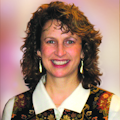
Keep your ear to the ground for an increase in the repurposing for bio applications of technologies designed for non-bio applications, including telecom and automotive.
Telecom we've already seen—and are continuing to see. Optical coherence tomography (OCT) is a good example: This technique, which has substantially impacted ophthalmology and is emerging for many other applications, was enabled by technology developed decades ago for telecommunications.
OCT generates volume images at high speed, traditionally at millimeter-to-centimeter depths with micron-scale resolution. But now, in the MIT lab of OCT pioneer Jim Fujimoto, researchers have achieved high-speed 3D OCT imaging at cubic-meter volumes. This new development, dubbed "long-range" or "macro-scale" OCT, demonstrates "at least an order of magnitude larger depth range and volume compared to previous demonstrations of three-dimensional OCT," according to Fujimoto.
As with the original development of OCT, telecom components and methods are behind this advance. Long-range OCT relies on a telecom-focused silicon photonics coherent optical receiver by Acacia Communications to provide the necessary detection bandwidth and signal-processing capabilities.
The researchers used the macro-scale system to demonstrate macroscopic anatomical imaging, saying that it may be helpful for surgical planning or guidance, and could possibly provide 3D measurements for laparoscopy or for mapping structures such as the upper airway. While the researchers clearly state that macro-scale OCT will never replace true tomographic modalities such as MRI and CT for biomedicine, the method has many non-biomedical applications as well.
What other technologies designed for different industries are bound to benefit bio? Watch this space!
About the Author

Barbara Gefvert
Editor-in-Chief, BioOptics World (2008-2020)
Barbara G. Gefvert has been a science and technology editor and writer since 1987, and served as editor in chief on multiple publications, including Sensors magazine for nearly a decade.